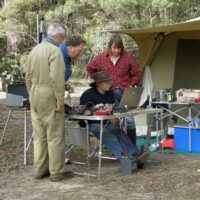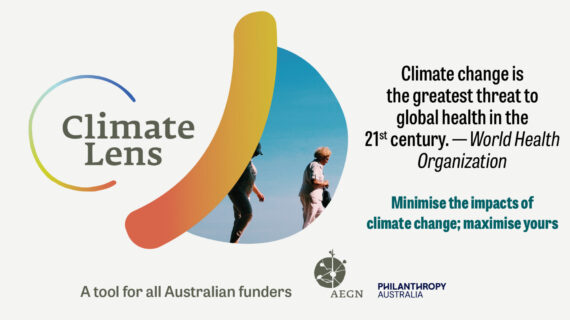
The Tasmanian Land Conservancy undertook a project on the critically-endangered Marsh-leek orchid. Only 20 plants have been recorded since 2009 at the Rubicon Sanctuary in northern Tasmanian. The TLC worked with 2 other groups to collect seed (and fungi), undertake test germination, and grow seedlings at the botanic gardens – safeguarding the species from extinction.

Halfmoon Biosciences researcher, Chris Surman, has received two grants from us (2012 and 2018) for the work he does on the Houtman Abrolhos, off the coast of WA. The first grant awarded was for his research on the Lesser Noddy, looking to find out more about its key foraging areas during breeding season. The second grant looked at marine debris found in seabird nests on one of the islands, in order to investigate levels of micro plastic ingestion by a variety of seabirds. He looked at nearly 900 nests and 9 seabird species, 70 nests contained at least one fragment of plastic or rope, many having multiple pieces. This study will continue.

Museum Victoria Little is known about the secretive Uperoleia frogs in Gippsland, Victoria. Currently two Uperoleia species are present: the Critically Endangered U. martini and Data Deficient U. tyleri. Researchers (led by Jane Melville) undertook a survey and ecological assessment to provide critical information for the longterm conservation of these frogs. Work included a survey for frogs, collection of samples, call recordings, ecological data and chytrid swabs taken. This project managed to significantly expand understanding of Uperoleai toadlets (Uperoleia martini is listed as Critically Endangered in Victoria) and map potential sites for further surveys.

PhD Candidate, Bronwyn Fancourt, is studying at The University of Tasmania and is focussed on the eastern quoll (Dasyurus viverrinus) which is extinct on the Australian mainland. Until recently, the Tasmanian population was considered abundant and secure, but numbers are declining rapidly. Bronwyn is looking into if the population is actually decreasing and why. Our funds helped with her research, funding the Toxoplasmosis MAT test kits. We found Bronwyn to be an outstanding researcher, communicating effectively with her volunteers and funders through regular emails and newsletters.

Visiting scientists undertake gruelling research – the Fraser Island Defenders Organisation received a grant in 2013 to carry out a scientific study of the fens on Fraser Island. The study was undertaken by leading scientists who are part of the International Mire Conservation Group (IMCG) and were attending their annual symposium in Brisbane. The aim of this study was to determine the exact geomorphic features and classification of these extensive peat areas, their global significance, and how to best manage them. The nine scientists collected a vast amount of data, the results to be published in a paper, shared with other researchers, and further studies to be undertaken.

A collaborative study, managed by the Nature Glenelg Trust, this grant funded a study into the nationally endangered Glenelg Spiny Crayfish. The aim was to investigate patterns of gene flow and genetic diversity across the range of the species in southeast South Australia and southwest Victoria. Populations sampled during the study were characterised by low levels of genetic diversity and were highly structured, with gene flow restricted within and across catchments. Alarmingly, the critical genetic condition of isolated populations in rising-spring habitats in South Australia highlighted vulnerability to localised extinction. The outcomes of this study will form the basis for future conservation of the species.

Australian National University student, Christina Zdebek, was working on her masters project a few years ago called “Vocal individuality and conservation of Palm Cockatoos on Cape York Peninsula”. Christina wanted to research whether using voice analysis was a reliable way to identify Palm Cockatoos, in order to set up long term monitoring. It could also be used to study parrots world wide. Here are links to a her results, as well as some 2015 articles Zdenek etal – VocalRepertoireOfPalmCockatoos2015 and Australian Geographic Article and World Parrot Trust Magazine Article.


